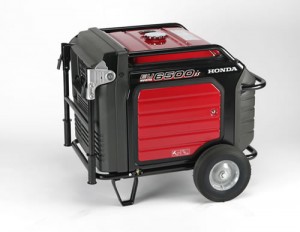 While generators can ultimately save the day during a brief power outage or during more extended outages and natural disasters, they can also ruin the day of some operators who aren’t careful when moving or operating the equipment. Because generators run on gasoline and produce an often significant amount of power, extreme caution should be taken to avoid everything from fires to electrocution and a series of other major risks. For those homeowners who are new to power generation equipment and wish to avoid these unfortunate accidents, there are a few things to keep in mind that will minimize the risk, boost safety, and keep the lights on without any side effects or emergency situations.
While generators can ultimately save the day during a brief power outage or during more extended outages and natural disasters, they can also ruin the day of some operators who aren’t careful when moving or operating the equipment. Because generators run on gasoline and produce an often significant amount of power, extreme caution should be taken to avoid everything from fires to electrocution and a series of other major risks. For those homeowners who are new to power generation equipment and wish to avoid these unfortunate accidents, there are a few things to keep in mind that will minimize the risk, boost safety, and keep the lights on without any side effects or emergency situations.
Generator Dangers: There are a Few Common Concerns to Keep in Mind
For the most part, modern generators have been designed in ways that reduce the overall safety risk associated with starting them, keeping them running, refueling the equipment, and keeping the lights on in the home. Even so, some risks are nearly impossible to mitigate if best practices and safety guidelines are not followed. Before assuming that generators don’t pose very big risks at all, consider the most common types of risk, injury, and emergency that can result from improper generator use or placement.
1. Carbon Monoxide Poisoning
Because generators fill in for standard electrical current when power lines are out of commission, they absolutely have to run on gasoline. While this is actually a good thing, it’s worth remembering that the fumes produced by gas-powered engines can be life-threatening if they’re discharged into a confined area that lacks ventilation. Carbon monoxide, which is the chief by-product of gas-powered engines, can kill humans and pets within minutes at high levels of concentration. Generators exacerbate this risk, with larger engines that both consume more gasoline than average and produce a higher level of carbon emissions than most other small-engine products around the home.
The key to eliminating this risk of carbon monoxide poisoning is simply to operate the generator only in an outdoor space. There is simply no need to operate the generator indoors or in an enclosed, confined indoor area. If homeowners prefer not to operate the equipment in a pure outdoor space, they can consider putting the generator under a porch or patio roof. Others might want to create a small compartment outside the home where the generator can be used and stored, but it’s crucial to make sure that this area is properly ventilated and not near any air intake vents for the home itself.
2. Electrocution
As should be expected from a piece of equipment that produces electrical power, the risk of electrical shock is a significant one. Though this risk is always present, there are a few key ways that the risk of electrical shock or electrocution can be reduced in a major way. First and foremost, make sure that the generator is not operating in a wet environment. This means keeping the equipment away from rain, snow, garden hoses, and other sources of moisture. Operators can also reduce their personal risk of electrocution by ensuring that their hands are not wet while handling the generator or any power cords that connect to the engine when power is being generated.
Those who connect the generator directly to building power supplies and circuit breakers must make sure that any such connection can isolate the building from its connection to the power grid. If not, the process of actually restoring electricity to the home could result in shock or electrocution of workers handling power lines and repairing the issue at hand. Follow instructions in the operator manual to properly configure the generator and any home electrical connections.
3. Fire
The large engines running within most generators produce a significant amount of heat. If these engines, or any of the generator’s surfaces, come into contact with gasoline, oil, or other materials around the home, fire can result. To prevent this from happening, simply keep the generator away from those materials while it’s running. When the generator is no longer needed, switch the engine off and allow it to cool for a minimum of 15 minutes before attempting to move, refuel, or otherwise handle the equipment.
Fuel Recommendations for Honda Generators
Another key way to ensure a high level of safety when operating a Honda generator is to make sure that any fuel used in the engine is the proper type of fuel for that generator model. Typically, Honda recommends that generator owners use only unleaded gasoline with an 86 octane rating or higher. Additionally, the fuel should be no more than 10 percent ethanol. E85 fuels, and those with higher concentrations of ethanol, can pose significant problems for the engine. Honda’s engines simply aren’t designed or tested for use with ethanol-based fuels above a certain concentration, and it’s a good idea to avoid these fuels in order to assure safety throughout operation.
For more on Honda generator safety, fuel, and any OEM replacement parts that might ensure greater safety during operation, generator owners can visit HondaLawnParts.com. With helpful resources and an OEM parts search tool, this is a great resource for generator longevity and operator safety.
